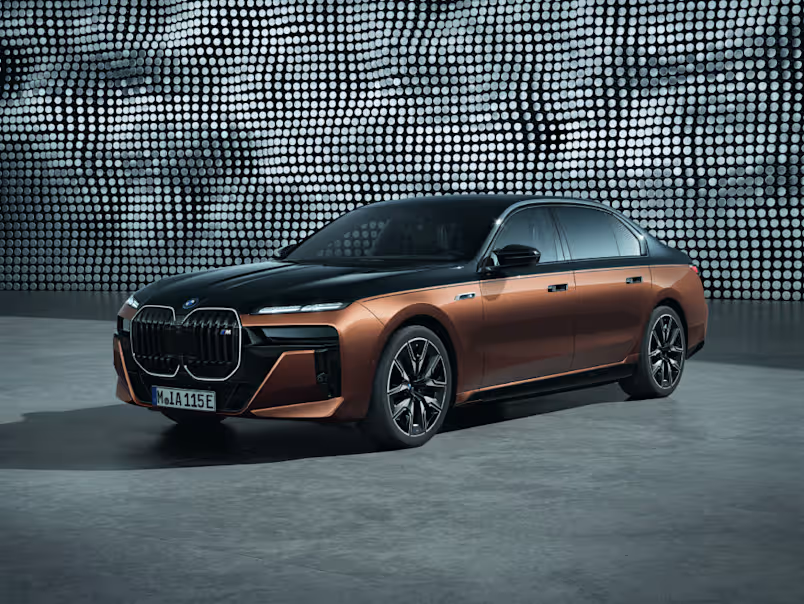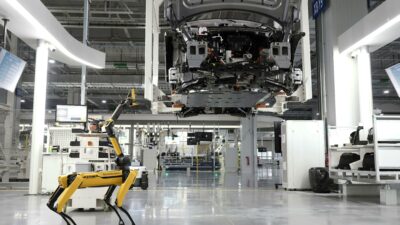
2024 BMW i5 – ALL-ELECTRIC EXECUTIVE | THE FIRST-EVER BMW i5
POISED TO TAKE CHARGE

A twist on tradition.
The market launch of the new BMW 5 Series Sedan will begin in October 2023. The new model generation will be offered worldwide with all-electric drive and, depending on the market region, also with plug-in hybrid systems as well as with highly efficient petrol and diesel engines including 48-volt mild hybrid technology. Like all previous model generations, the new BMW 5 Series Sedan is produced at the BMW Group Plant Dingolfing, where the electric motors and high-voltage batteries for the BMW i5 are also manufactured.
Specially tuned suspension systems maximise comfort and agility.
The flexible drive system technology offered by the new BMW 5 Series range – which now gives customers the choice between classical internal combustion engines, plug-in-hybrid solutions and fully electric drive systems – leads to wide variations in vehicle weight. With this in mind, model-specific, case-by-case chassis tuning and corresponding application of all control systems deliver signature BMW driving pleasure, regardless of the drive concept involved.
As the range-topping model variant, the BMW i5 M60 xDrive (electric power consumption combined: 21.2 – 17.9 kWh/100 km; CO2 emissions: 0 g/km in the WLTP cycle [provisional figures]) is fitted as standard with Adaptive Suspension Professional including electronically controlled dampers. This suspension system can also be specified as an option for the BMW i5 eDrive40 (electric power consumption combined: 19.7 – 16.0 kWh/100 km; CO2 emissions: 0 g/km in the WLTP cycle [provisional figures]). Thanks to an innovative form of BMW Vertical Dynamics Management, it offers a noticeable increase in sports performance combined with a level of ride comfort that also represents a clear step forward from that of its predecessor.

The latest version of BMW’s Vertical Dynamics Management, now in its ninth generation, is making its debut in the new BMW 5 Series Sedan. This technology is based on a newly developed, extensively networked control logic, and factors in all the available input variables – such as wheel speeds, steering angle, yaw rate and acceleration – to establish the ideal damping forces. The system no longer calculates the required damping forces using mathematical models, but instead favours physical calculation of data on the current driving condition. This ensures clearly defined body control and precise suspension response in every driving situation.







